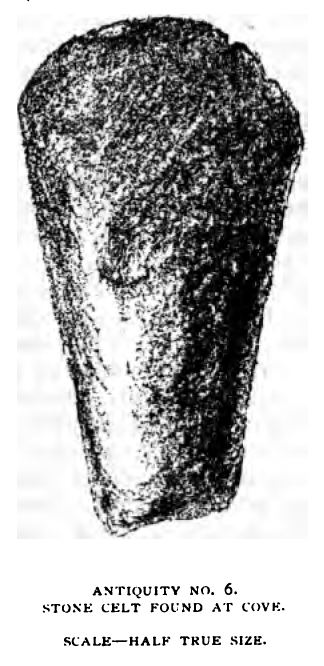|
UP to the middle of the seventeenth century Gairloch
seems to have been a continual battlefield. As to Kenlochewe, it was so
often ravaged, and its population so frequently decimated, that one is
surprised to find anything left of it!
Among the MacBeaths, M'Leods, Macdonalds, and
Mackenzies (assisted by MacRaes), Gairloch was a veritable bone of
contention; and for some time aftfer the fierce struggles among the
warriors of these clans or tribes had ceased it was still a prey to the
raids of the Lochaber cattle-lifters.
What wonder that the Highlander had actually to
sleep in his war-paint!
Several weapons of warfare have been mentioned incidentally in Part I.,
viz., the dirk of Hector Roy, the battle-axe of Big Duncan, the bows and
arrows of several of the MacRae archers, and the shotgun of Alastair
Buidhe Mackay. The broadsword and targe of the Highlanders were mentioned
by Tacitus, and continued to be their arms when in battle array until the
eighteenth century. The broadsword is often called the claymore or big
sword; it was two-edged. The targe was a round shield of wood covered with
leather. Bows and arrows were used against enemies at a distance, and the
battle-axe was a favourite and deadly weapon at close quarters. The dirk
was mostly used in personal encounters, or when heavier weapons -were not
at hand. AH these weapons were common among Gairloch warriors, except the
gun, which was rare here, and in most parts of the Highlands. Bows were
made, it is said, of ash ; and the present ash trees at Ardlair, and other
places hereabouts, are supposed to have sprung from old trees grown long
ago on purpose to supply bows.
After the "Forty-five" the clan system faded
away, and it is not likely, indeed not possible, that we shall ever again
see the able-bodied men of a clan gathered under their chief in battle
array.
The immediate
substitute for the old system was the raising by several Highland chiefs
of regiments of their clansmen as part of the regular army of Great
Britain. Lord Seaforth raised the regiment known as the 78th Highlanders
in 1793; and as we have seen, John, second son of Sir Alexander
Mackenzie, tenth laird of Gairloch, gathered from Gairloch a company for
that regiment, of which he became captain.
All the same, enlisting in the army was never
popular in Gairloch ; and, as a rule, recruits could be procured only by
the detestable means of the pressgang, which was also used for obtaining
sailors for the navy.
Dr
Mackenzie, writing of the days of his father, Sir Hector Mackenzie, says:—"One of my father's amphibious crofters disappeared, leaving his wife
and family to the care of Providence, without a clue to his being dead or
alive, for some five years. One day my father,
superintending some job near the bay, noticed a man coming towards him
with a true sailor-like roll. Intimate with the cut of every man on the
estate, says he, 'Surely that is dead Donald M'Lean's walk and, on coming
near, it certainly was Donald himself, in naval attire. 'Halloa, Donald!'
says he, ' where on earth are you from?' speaking, as he always did to his
people, in Gaelic. Donald pulled up, and saluting, replied in two words,
also in Gaelic, 'Bho Iutharn,' the English of which is simply 'From hell'.
The service on board a man-of-war was then really infernal, though Donald,
who had been grabbed by a press-gang, had survived five years of it, and
found his widow and children glad to see him again."
For other stories connected with
the press-gang system see Part II., chap. xxv. Very few recruits are in
the present day forthcoming from Gairloch for the army, navy, or militia.
The Volunteer corps, which is the
"I" Company of the Ross Highland Rifle Volunteers, is well supported, and
is generally over its authorised strength. It has three pipers, and the
rank and file comprise a number of fine men.
Though perhaps not exactly within
the subject of this chapter, the following account given by James
Mackenzie of almost the first guns brought to Gairloch may be added :—

It was about 1823 that a large
ship was destroyed by fire at Ullapool. Part of her cargo was saved.
Besides some casks of fish-hooks, a number of guns were taken put of the
burning ship. There was a man then living at Mellon Udrigil in Gairloch
named Finlay Fraser; he had come as a foxhunter from Beauly; he got seven
of the guns out of the ship. It is said that one of these guns of more
than sixty years ago was recently to be seen preserved as a curiosity in
the farmhouse of Tollie. Finlay carried on illicit distillation of whisky
in a large cave on the Green-stone point. He used to steep barley stone
celt found at cove in whisky, and spread it on the ground scale—half true
size. in front of a sort of screen, called in Gaelic "skar," behind which
he lay in wait with one of his guns until wild geese and other birds came
to eat the barley, which soon rendered them "drunk and incapable," when
Finlay got easy potshots at them. Though the guns obtained from this ship
were the first in general use in Gairloch, it is certain that guns had
occasionally been brought into the parish long before.
|
